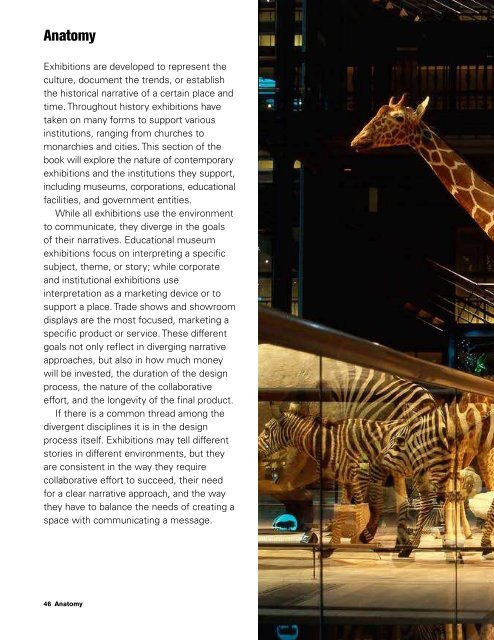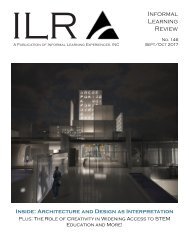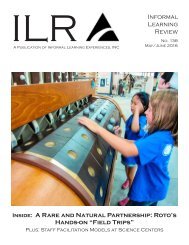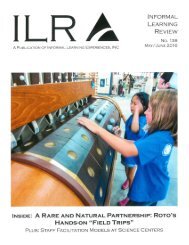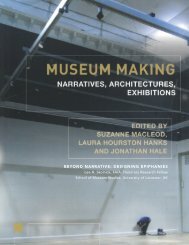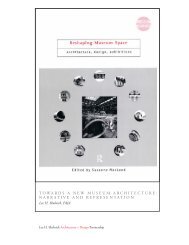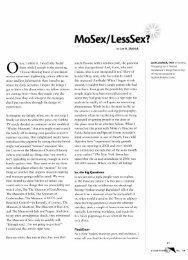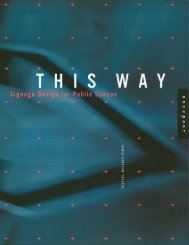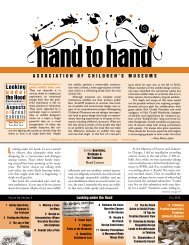070821 LHS_WIED.PDF
- No tags were found...
You also want an ePaper? Increase the reach of your titles
YUMPU automatically turns print PDFs into web optimized ePapers that Google loves.
Anatomy<br />
Exhibitions are developed to represent the<br />
culture, document the trends, or establish<br />
the historical narrative of a certain place and<br />
time. Throughout history exhibitions have<br />
taken on many forms to support various<br />
institutions, ranging from churches to<br />
monarchies and cities. This section of the<br />
book will explore the nature of contemporary<br />
exhibitions and the institutions they support,<br />
including museums, corporations, educational<br />
facilities, and government entities.<br />
While all exhibitions use the environment<br />
to communicate, they diverge in the goals<br />
of their narratives. Educational museum<br />
exhibitions focus on interpreting a specific<br />
subject, theme, or story; while corporate<br />
and institutional exhibitions use<br />
interpretation as a marketing device or to<br />
support a place. Trade shows and showroom<br />
displays are the most focused, marketing a<br />
specific product or service. These different<br />
goals not only reflect in diverging narrative<br />
approaches, but also in how much money<br />
will be invested, the duration of the design<br />
process, the nature of the collaborative<br />
effort, and the longevity of the final product.<br />
If there is a common thread among the<br />
divergent disciplines it is in the design<br />
process itself. Exhibitions may tell different<br />
stories in different environments, but they<br />
are consistent in the way they require<br />
collaborative effort to succeed, their need<br />
for a clear narrative approach, and the way<br />
they have to balance the needs of creating a<br />
space with communicating a message.<br />
46 Anatomy


